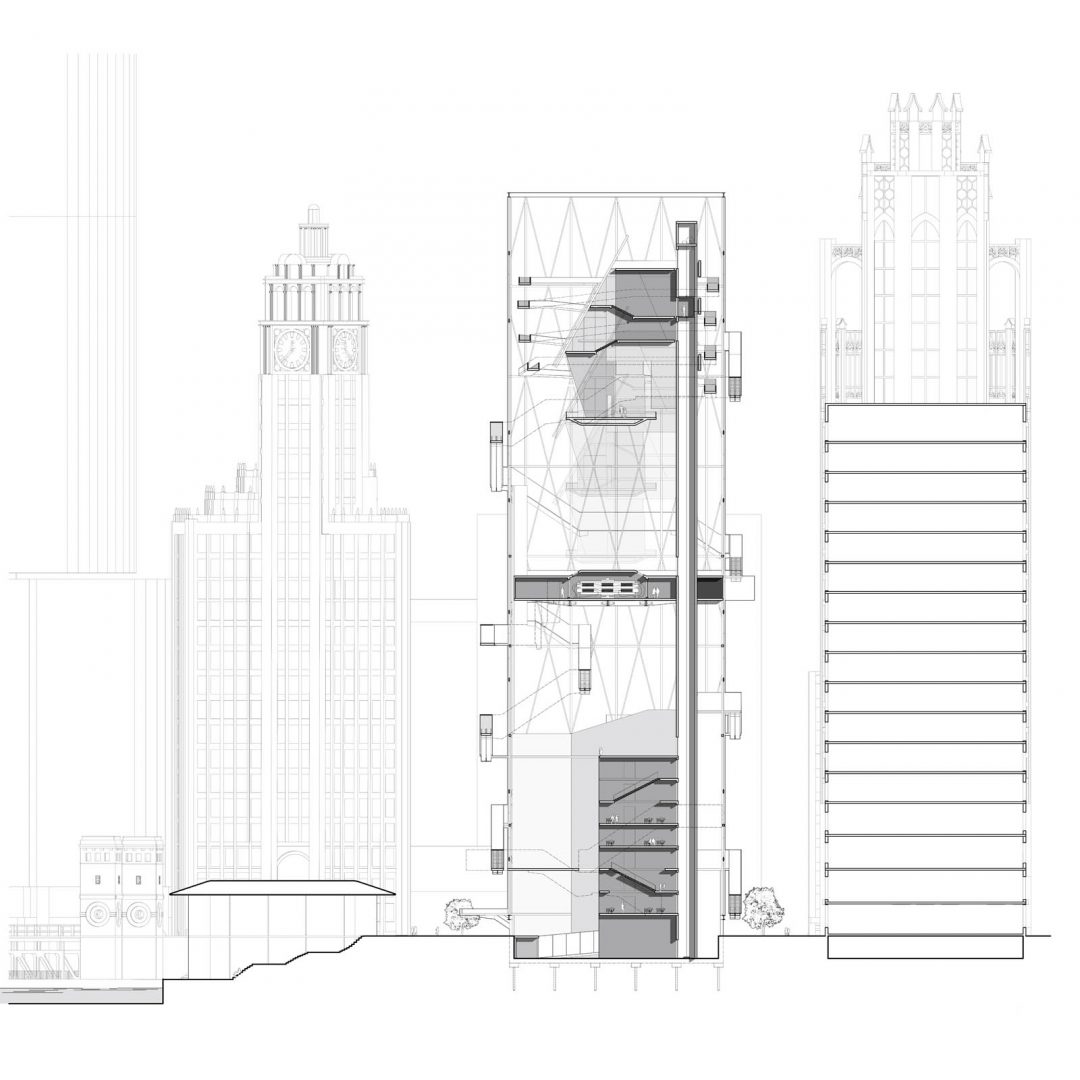ARCH_500-600 Options Studio: ‘Levitation: Gravity Falls’
Sung Ho Kim, Professor
“But when the disciples saw him walking on the sea, they were terrified, and said, “It is a ghost!” and they cried out in fear. But immediately Jesus spoke to them, saying, “Take heart; it is I. Do not be afraid.” And Peter answered him, “Lord, if it is you, command me to come to you on the water.” He said, “Come.” So Peter got out of the boat and walked on the water and came to Jesus. But when he saw the wind, he was afraid, and beginning to sink he cried out, “Lord, save me.” Jesus immediately reached out his hand and took hold of him, saying to him, “O you of little faith, why did you doubt?” And when they got into the boat, the wind ceased. And those in the boat worshiped him, saying, “Truly you are the Son of God.”
—Matthew 14:22–33
Throughout history, humans have been obsessed with the notion of levitation in cultural mythologies, religions, and science fiction. Defying gravity has also been a fascination for optical and perceptual manipulation. Levitation is Latin for levitas, meaning lightness, the process by which an object is held in a floating position without mechanical and physical support. Achieved by an upward force that impedes the pull of gravity, it can be created by magnetic and electrostatic energies or reactionary forces such as buoyancies, aerodynamics, and hydrodynamics.
This studio asked, What would the built environment look like if we could harness the power to resist gravity? Would it be able to respond to the larger issues of global warming and flooding cities? What if buildings could counteract the vast destruction of earthquakes and unstable seismic wave movements? These challenges demand creative solutions for new forms of architecture. Architecture, landscape architecture, and urban design have always relied upon building from the ground up, but we will need to build from the top down to survive on the surface of the earth for the next thousand years.
In 2015, inventor Greg Henderson and his Silicon Valley technology company Arx Pax were awarded Patent No: US 9, 126,487 B2 for magnetic field architecture (MFA). With it, Arx Pax produced the first commercial hoverboard that floats on air. However, the potential for MFA technology goes far beyond levitating skateboards, with applications for structural isolation, recreation and entertainment, industrial automation, and transportation. This four-year-old company has expanded the technology market over the last two years with endless possibilities for innovation.
The program for this studio is a full-scale research laboratory and regional headquarters for Arx Pax’s 50 employees at 401 North Michigan Avenue, Pioneer Court in Chicago, Illinois. A monumental civic plaza, Pioneer Court has hosted numerous art installations, performances, civic events, and festivals since its development in 1965. It has also been featured in several films and television advertisements. In 2003, NBC Chicago opened a street-level studio in the Equitable Building (designed by Bruce Graham of SOM) next to Pioneer Court, becoming the first local television station to open such a studio. In 2017, a new flagship store for Apple (designed by Foster + Partners) opened, creating a contemporary urban plaza surrounded by historical and modern buildings.

Xun Wang

Xun Wang

Xun Wang

Xun Wang

Peiyao Li

Jiang Chang

Jiang Chang

Jiang Chang